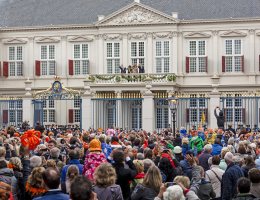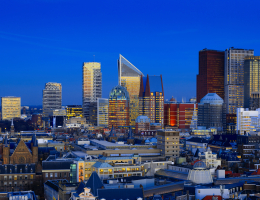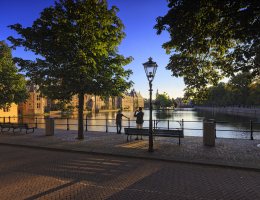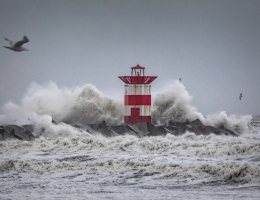The Kurhaus - An icon on the North Sea
We can see it looming from afar and we are very proud of its existance, the dome of the Kurhaus in Scheveningen. A building of international allure. Not surprising when you consider that the Kurhaus was once built in 1885 by the German architects Johann Friedrich Henkenhaf and Friedrich Ebert, both responsible for the construction of the Victoria Hotel and Hotel Krasnapolsky in Amsterdam. The Kurzaal (ballroom) under the dome, thanks to an ingenious construction of galleries, can accommodate hundreds of guests. The large windows provides a fantastic sea view. At the time, wealthy families, German nobility and industrialists attended concerts here and in the summer, they sauntered from the terrace of the Kurhaus across the old pier of Scheveningen, which was an extension of the Kurhaus. Renowned orchestras from Berlin, Paris and, since 1915, the Residential Orchestra, which would play there for more than half a century. Opera performances were established and the 1930s and ballet companies also performed. Big names such as Herbert von Karajan, Maurice Chevalier, Edith Piaf and Marlene Dietrich performed there. A performance by the Rolling Stones in 1964 that ended in chaos is now legendary.
The dome - An intriguing construction
It gets intriguing when we go upstairs. The Kurzaal actually has two domes. A wooden inner dome (at a height of 14 metres) and an outer dome, approximately 30 metres high. The inner dome was once transparent and the outer dome contained windows. For example, the Kurzaal was illuminated with daylight from above. In the evening, hundreds of lamps lit the dome and a magical light shone on the the floor. You can well imagine that the windows were once closed so as not to mislead shipping traffic too much!
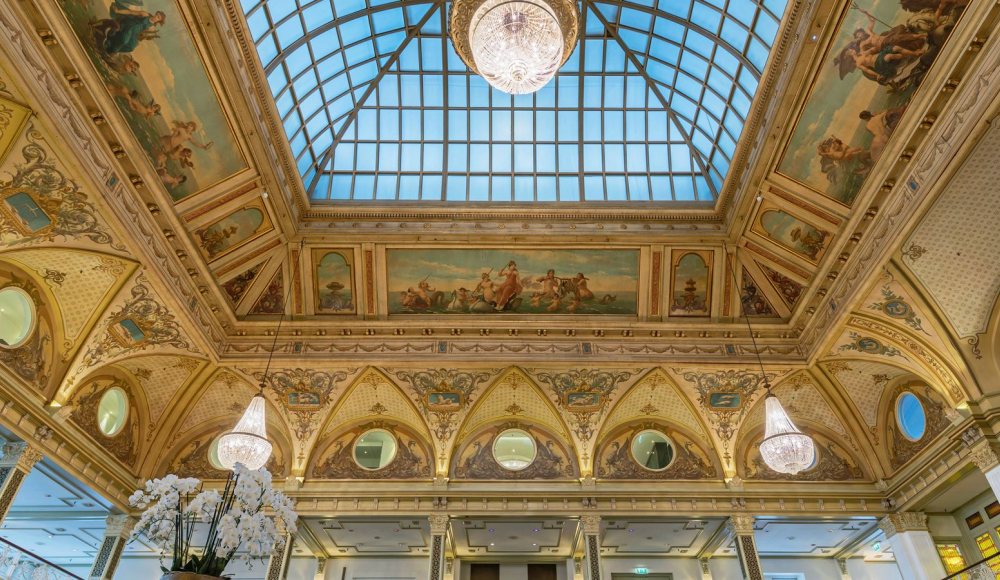
Glorious History - Fire, War, Decline and Rebuilding
Admire the breathtaking beautiful Kurhaus, it is difficult to imagine that the hotel also went through difficult times and various renovations. A year and a half after its construction in 1885, it burned down completely and the dome collapsed. Within a year there was already a new building, this time designed by Henkenhaf alone. The new building resembles its predecessor in everyway. Only the dome was slightly higher and had round arched windows instead of square ones. The fire itself which took place on 1st September in 1886 must have been a spectacle. That day more than 25,000 people were transported by steam tram from The Hague to Scheveningen to watch!
In the Second World War, Scheveningen was severely affected by the construction of the Atlantic wall, the defense line that the Germans put up along the coast. The Wandelhoofd Wilhelmina (the Pier of Scheveningen) was destroyed by fire and the Kurhaus itself was closed from 1941 to May 1945. After the war, the area around the Kurhaus became unattractive due to barbed wire barriers, tank walls and bunkers.
The Reconstruction started at full speed. New architecture appears and a new pier is officially opened in 1961. Now situated a little more to the north. In this way, the new pier no longer deprives hotel guests of the sea view. The 1970s were dramatic. The popularity for the Dutch seaside resorts started declining. After all, it is easy for more and more people to go to sunny beaches around the Mediterranean. The hotels in Scheveningen were falling into disrepair including the Kurhaus. The once beautiful columns were weathered and on important visits the hotels worn red carpet was updated with some red paint.
While other luxury hotels followed first, the Kurhaus also closed in 1972. Only the Kurzaal (ballroom) was still used for performances and concerts. The windows of the closed hotel were covered with newspaper and the Kurhaus was protected with barbed wire and guard dogs. The situation was so dramatic that there was a threat of demolition. After protests from the population, the hotel was nevertheless retained and given monument status. Compared to the original, the Kurhaus has been radically changed. In view of the poor condition, a decision needed to be made and that was to completely rebuild. Only the central part with the dome has remained, the rest has been demolished and rebuilt.

Fortunately by looking at the Kurhaus, you can now imagine yourself back in the days of yore. Since 2014, the Kurhaus has been part of the Amrâth Hotel Group and you can once again enjoy a luxurious stay at the beach. Events take place in the Kurzaal and in the summer the Festival Classique revives the glory years of that time with its programming in the Kurzaal.
More information regarding overnight stays and dining at the Kurhaus


